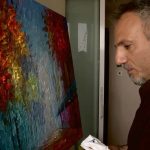Meet the Artist: 10 Questions with Ron Agam
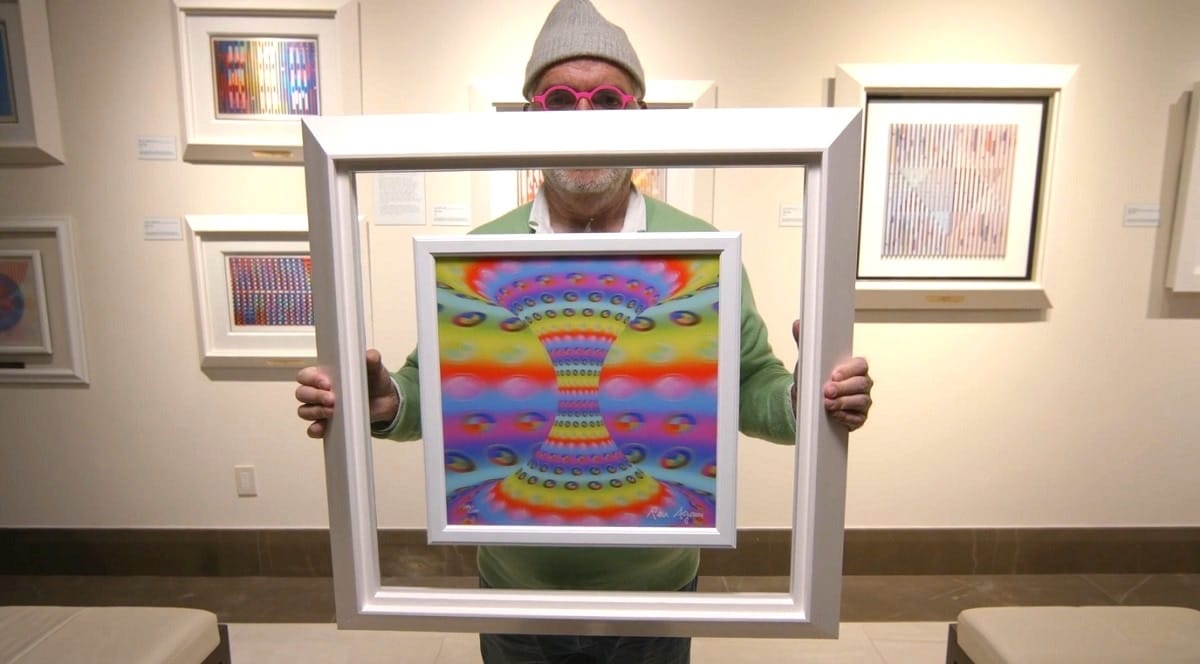
Ron Agam started his career as a fine artist later in life, but has made up for lost time with bold, exciting art that evokes movement and contemplation.
He readily admits that his father, kinetic art pioneer Yaacov Agam, has had an influence on his style. However, Ron has skillfully built upon the foundations of the artists who came before him to create intriguing works of abstract shapes, colors, and perspectives that are uniquely his own.
We want Park West collectors to get to know Ron Agam better, so we asked the artist 10 revealing questions about his art, his career, and his inspirations. Art lovers—we invite you to meet Ron Agam! And, be sure to check out his NEW sale collection now available through Park West Gallery!
1. When did you first realize you wanted to become an artist?
I was attracted to photography at the age of 6. My father had a studio in Paris with a full-time photographer, and that’s the first time that I realized I had an interest in doing something artistic.
When I became a painter, I was 52. Why this gap? Because I never felt any interest. I didn’t think I had any talent, nor did I think it was interesting to me. Maybe the subliminal part was, being the son of my father, it was not something I wanted to go into. But, at 52, something happened in my life—it was a period of depression—and either you can sink or rise. That was the catalyst to do something I never did before, and I slowly gained confidence. I saw I was doing something I could be proud of, but it’s an enormous amount of discipline and work.

Ron Agam’s “Kinetic Square” moves and evolves as you walk past.
2. What inspires your art?
When I was young, I was surrounded by art. Abstract geometry was basically my visual world when it came to art, so I built up a comfort level around those kind of expressions.
3. What artists have influenced your style?
As a young child, I was particularly attracted to artists like [Josef] Albers, [Wassily] Kandinsky, and the Russian Constructivists. I couldn’t explain why, but it’s the simplicity, the purity.
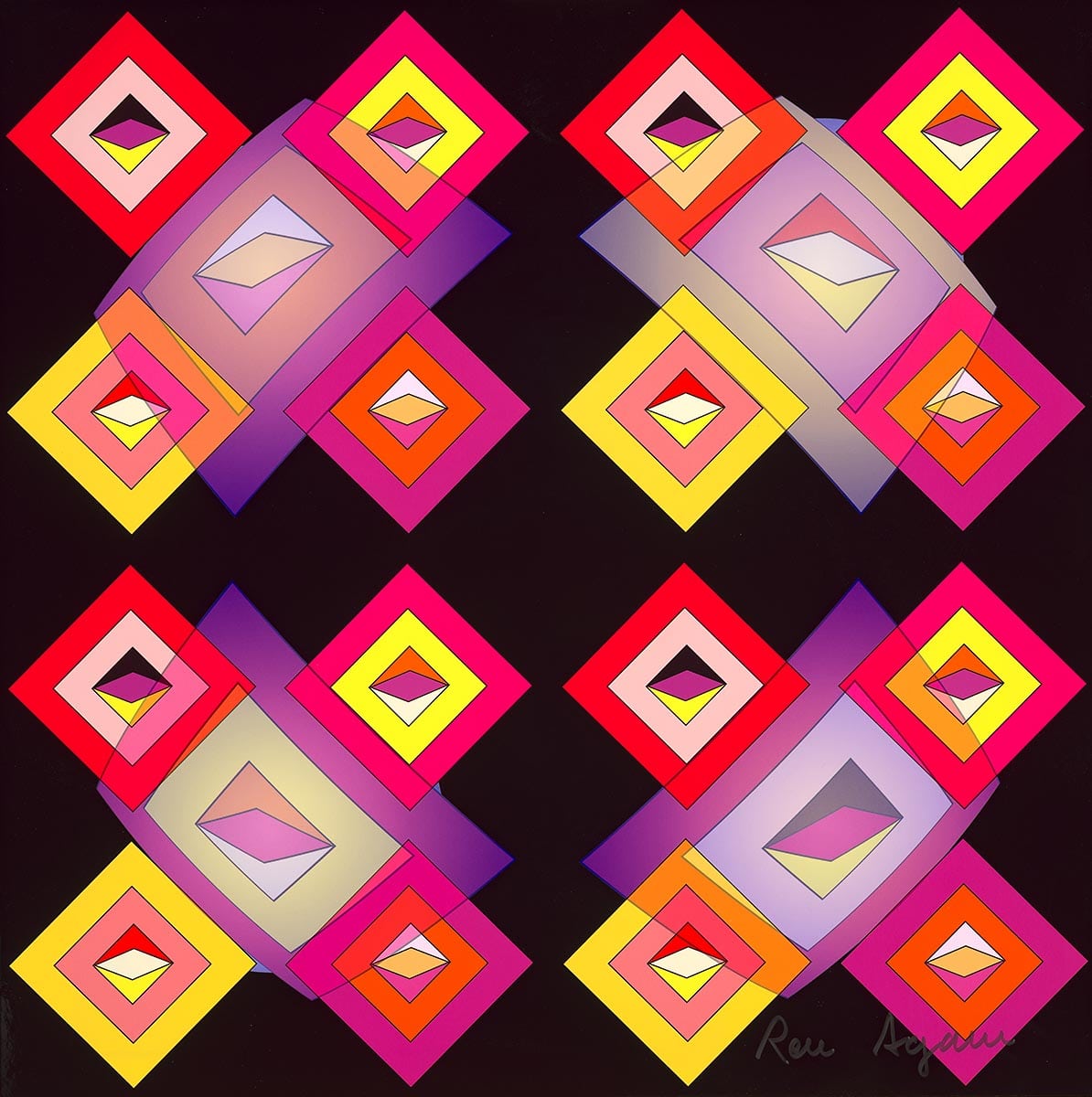
“Up and Down in Black,” Ron Agam
4. Can you talk about the creative process behind your 3DK art?
For so many years, I saw what my father did with the Agamographs. When I started to do these 3DK works, I found something that could be my own visual vocabulary, something different than my father’s. My father was mostly interested in images that would change from one set to another. I’m more interested in the image itself and in creating illusions of depth and movement.
My process for the 3DK artwork is very much influenced by my experiences in photography, because I worked from the same type of environment, except that I now produce images that are influenced by all of the possibilities that the computer enables.
5. How did your career in photography affect your art?
The knowledge that I acquired as a photographer helped me a lot in creating these 3DK images. I spent two years photographing all types of flowers, and when you look at the flower and you look at the way nature created these symmetries and shapes, I think that, subconsciously, when I started to create my work that influenced me a lot.

“Endless Journey,” Ron Agam. Shown from five angles.
6. What do you want collectors to take away from your art?
There is a sense of harmony in the works that I do, and our souls—especially in the world in which we live—need a time out. I hope that through the work they are acquiring they will have the possibility to take themselves into an unknown space that gives them an aspect of meditation and peace.
I hope it helps them see the world in a different way than they would see from a figurative painting, and that it will help them develop their own imaginations.
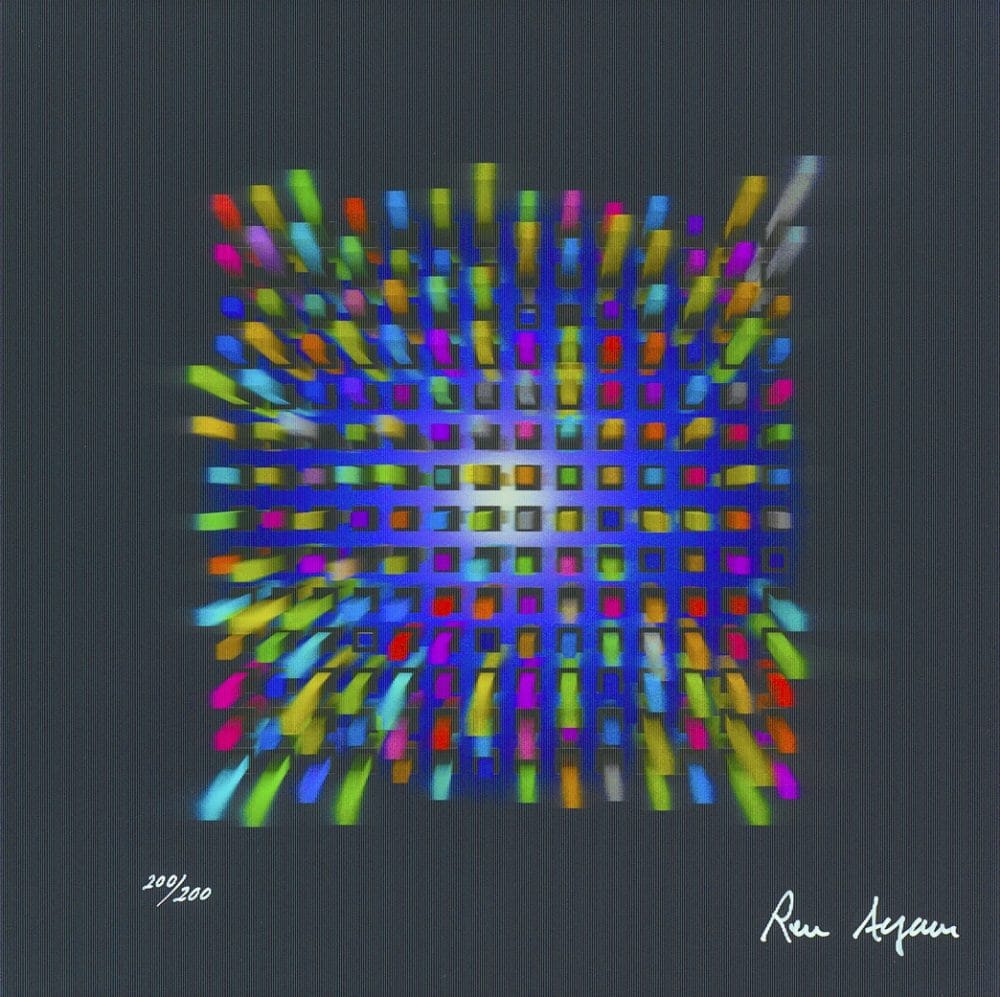
“New York” (2017), Ron Agam
7. You earned the Chevalier of the Legion of Honor from the French government in October 2009. What was that experience like?
It’s the biggest honor that France gives to its people. To earn it, you have to render exceptional services to the country.
I didn’t know about it, they called me the morning of. I was overwhelmed with emotion, because when you see the people who receive it, they’re the luminaries of our society. They give you this honor because they think you deserve it, so you say “thank you!” I got a very nice letter from the [French] president.
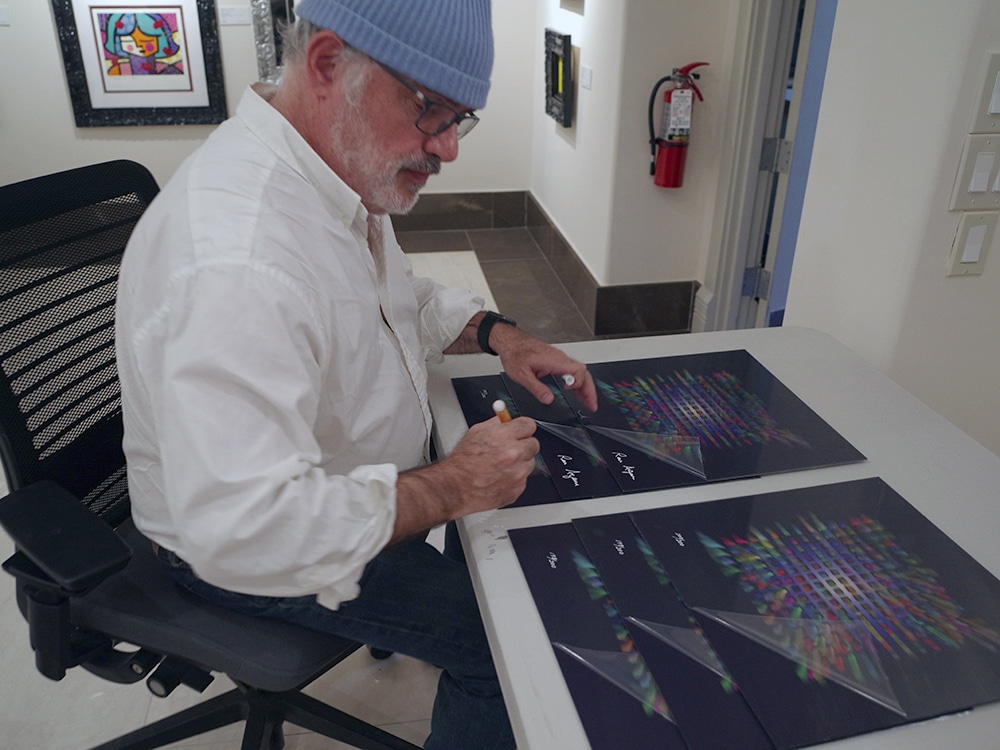
Ron Agam signs editions of his “New York” 3-DK art.
8. What do you enjoy doing when you’re not painting?
I love to ride motorcycles, I love to windsurf, I love cooking—cooking is almost like an art form. I love to travel and to be socially active, and use my influence to help make the world a better place. I’m very active with an institution called the 92Y in New York and we invite the luminaries of society to come and give talks.
9. Do you have a favorite color?
Colors come in periods. Even Picasso had his Blue Period and then he moved on to something else. If you ask me today, I have a very strong attraction to yellow.
10. You’ve drawn comparisons between star constellations and art. Could you explain this connection and what it means to you?
When I was much younger, I used to look up at space trying to figure out the meaning of our existence—why we exist. You try to find spiritual reasons and, when you look at the sky and the stars, you start to understand more about creation. You understand there are multiple galaxies and stars.
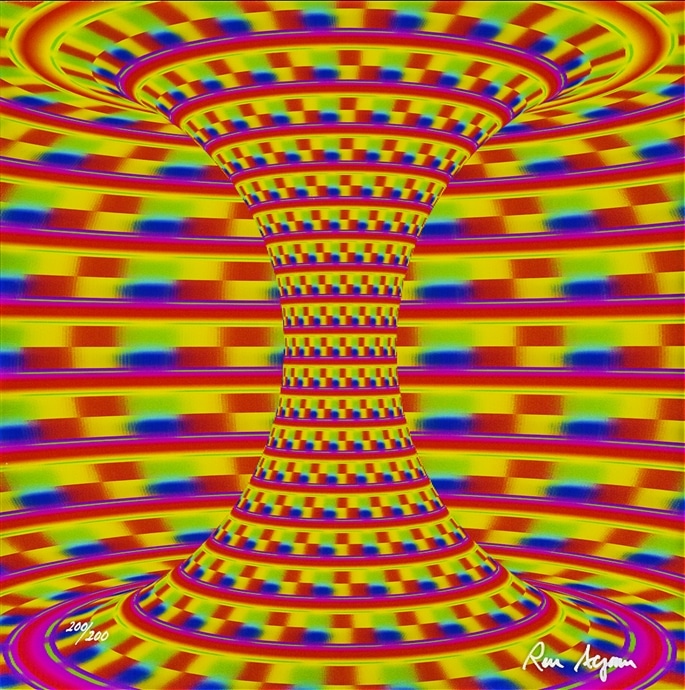
“Hommage to Einstein,” Ron Agam
It can drive you crazy to think about the meaning we have to digest as a human being on this earth in relationship to the vast, enormous cosmos in which we exist. I think artists take facts like this and project human meaning onto them. The most phenomenal thing about humans is our curiosity.
If you’re interested in collecting the artwork of Ron Agam, contact our gallery consultants at (800) 521-9654 ext. 4 or sales@parkwestgallery.com.






